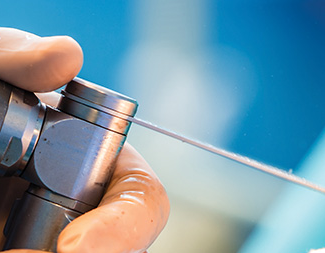What is Subtalar Arthrodesis? - Definition, Technique, Recovery, CPT & ICD-10
Arthroscopic subtalar arthrodesis was first documented by Tasto in the year 1992. He performed the procedure with the patient in the lateral decubitus posture and used the traditional anterolateral, posterolateral, and related portals. Arthroscopic arthrodesis causes less damage to soft tissues and keeps the blood supply and proprioception of the calcaneus and talus intact, which could help the bones fuse.
Patients who suffer from problems such as post-traumatic arthritis following calcaneal fractures or adult-acquired flatfoot deformity as a result of posterior tibial tendon insufficiency may benefit from subtalar arthrodesis, which is a surgical procedure that involves the fusing of the posterior portion of the subtalar joint. Due to the fact that nearby joints are able to rapidly adjust for the localized loss of mobility, potential loss of motion in the subtalar joint does not have a significant impact on the function of the foot and ankle.
What is Subtalar Arthrodesis?
Subtalar arthrodesis is a surgical intervention that includes fusing the subtalar joint (found in the ankle between the talus and calcaneus bones) to relieve discomfort and increase stability. Arthritis, flatfoot (both congenital and acquired), and ankle instability are common reasons to undergo this procedure. To help the bones heal and join together, screws, plates, or other fixation devices are used to keep the subtalar joint from moving.

Definition
Subtalar arthrodesis is a surgical treatment involving the fusion of bones in the subtalar joint, which is positioned just below the ankle joint. It is used to treat injuries-related abnormalities in the hindfoot as well as chronic pain brought on by disorders like arthritis. The procedure may alternatively be referred to as ankle fusion or ankle arthrodesis.
Technique
Patients undergoing subtalar arthrodesis often get general anesthesia and are placed in a prone posture on the operating table. A subtalar joint incision is performed, and the joint is reached through the soft tissues. After the bones have been meticulously positioned to encourage bony fusion, they are held together with fixation devices like screws, plates, or pins. In certain circumstances, a bone graft may be necessary in order to facilitate the fusion process. After the incisions in the soft tissues have been closed, the patient will need to rest in a cast or boot for a few weeks. In order to restore the ankle's strength and range of motion after the treatment, physical therapy is typically necessary.
Recovery
It may take up to a year after a subtalar arthrodesis for the patient to get full relief from the condition. The foot should be kept elevated above the pelvis for the first 10 days following surgery, and immobilization in a backslab is advised for the first two weeks. Over the subsequent weeks and months, the swelling will subside, although it may persist. During this time, it is crucial to concentrate on wound care and physical therapy because the joint may take up to three months to fully recover. Patients should anticipate a minimum of 10-12 weeks of recuperation time before resuming their regular routines.
Subtalar Arthrodesis ICD-10
Subtalar arthrodesis is identified by the ICD-10 code Z98.1. Subtalar arthrodesis is a surgical treatment for relieving discomfort and strengthening the ankle joint by fusing the bones together.
Subtalar Arthrodesis CPT Code
Subtalar joint arthrodesis is denoted by the CPT code 28725.
 Reviewed by Simon Albert
on
February 02, 2023
Rating:
Reviewed by Simon Albert
on
February 02, 2023
Rating:











